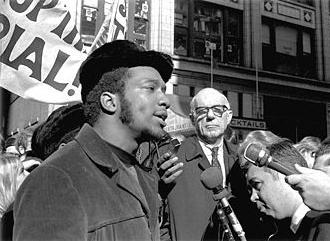"You can kill a revolutionary, but you can never kill the revolution."~ Fred Hampton
Fred
Hampton began life as a leader among his peers. A leader of several school
groups, Hampton transferred this leadership to his time at Crane Junior College
where he became the president of the NAACP Youth Branch in his hometown of
Maywood, Illinois in the late 1960s. During his time there, Hampton began
making the connections that would lead him to prominence in the Civil Rights
Movement including Rev. Jesse Jackson, Stokeley Carmichael (Kwame Toure), and
Dick Gregory. In 1968, along with Bobby Rush, Hampton founded the Illinois
Chapter of the Black Panther Party. The
Panthers spent much of their time educating future members about the
politics behind their actions as well as providing free meals for local youth.
As a result of his activism, Hampton became a target for the FBI’s COINTELPRO
and was murdered in his home at the age of 21.
Despite his youth, Hampton was a transformational leader.
Northouse (2016) defines transformational leadership as “the process whereby a
person engages with others and creates a connection that raises the level of
motivation and morality in both the leader and the follower” (p. 162). Hampton
has been described as being charismatic and, continuing with other Northouse
leadership descriptors, he was able to be an inspirational motivator. As
aforementioned, the Panthers spent six weeks educating potential members before
allowing them to join, setting high expectations for members. Hampton also
provided intellectual stimulation and individualized consideration to his
chapter members as he led them through several successful local protests.
Despite being a controversial figure, Hampton’s transformational
leadership style is an example of how age does not determine leadership. An
article that I read earlier this week, Keeping
Leadership White by Frank Lowe (2013), talks about the leader prototype and
how it is commonly that of a white male. As a young black man, Hampton rose to
his leadership role despite this prototype as a part of the counterculture. He
engaged the youth around him to raise awareness about racial injustice and to
support his community. As we study leaders and work to improve our own
communities, it’s important that we remember that traditional leadership doesn’t
have to look the same; black youth can be just as powerful as white men.


No comments:
Post a Comment